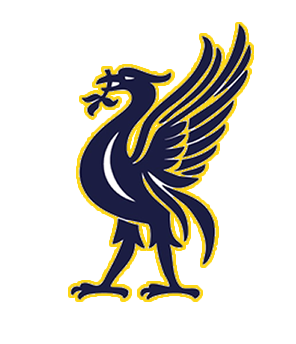
St John’s, Cambridge – its link with football and LRAFC
For those who never quite made it past the Contents page when reading the Complete History of the Liverpool Ramblers, the first image is on page 8. It is the 1876 St John’s Cambridge Football XI, resplendent in their Sunday best with bowler hats and canes, standing on the steps of the college entrance (see above). It is the earliest existing Cambridge University football photograph and, more importantly, shows Alfred Keeley.
Some will recall that his first church posting was to be Curate of St John’s Church, Bootle where he started a football team called Bootle St John’s. It included at least 7 players who later became founders of Liverpool Ramblers after Keeley was transferred to Wimbledon in 1881. Alfred Keeley was the first link in the chain that led to the start of our club, although there were many members of Liverpool Cricket Club, based at Aigburth who also joined as founders in 1882.
This summer I was asked to write a chapter for a book on early football codes at the public schools. It is a narrow subject, ideal for insomniacs, but it did lead to the football rules that we have today – in particular, the offside rule principle. From the 1840’s playing active sport was on the up, and those going to Oxbridge, especially Cambridge, wanted to continue playing football as they had enjoyed at their old school. The problem was every school played the game under its own rules (every school’s rules allowed the ball to be caught from a kick by the opposition!). There were no external fixtures. At the universities there were games between Old Boys teams , with one half played under one set of rules and the second half under the other. So attempts were made to find an agreed set of rules, not easy when everyone had a different offside rule and the Rugby faction wanted to run with the ball and allowed hacking (which was seen as the only way to stop a fast player with ball in hand). They were successful in achieving this (old Rugbeians found themselves in the minority) and Cambridge University Football Club was formed.
By 1863, a large number of Old Boys teams (Old Etonians, Harrovians, Westminsters etc) were playing in the London area and were unhappy there wasn’t a uniform football code. A meeting was held in central London to try and sort one out. The problem of rugby rules reared its head and there was a danger that hacking and handling would win the day, until Cambridge University produced a revised edition of its rules, which were read out to the attendees during the crucial 4th meeting and became the basis of the first set of FA Rules.
At Cambridge, for over 20 years undergraduates responsible for thrashing out their rules were principally Old Boys from Eton, Harrow, Rugby, Westminster and Shrewsbury, mostly based at Trinity and St John’s. Their colleges lie adjacent to each other. Old Salopians were at the forefront of this process, one of the reasons being the number from Shrewsbury that went to Trinity college, the larger and St John’s. But why so many to St John’s? Shrewsbury’s first established headmaster in 1562, Thomas Ashton, had been to St John’s. To prevent the town corporation from pocketing the school’s finances and treating the headship as a favoured post he arranged for the College to be responsible for both aspects in return for scholarships to the college for Shrewsbury pupils. The connection was kept up through the centuries. Dr Kennedy was headmaster in the mid 19th century and the foremost classics teacher in the country with Salopians gaining entry to Oxbridge and wining an unrivalled number of classics prizes.
Which brings us back to the 1876 picture of St John’s Football XI. When researching Shrewsbury School’s role in our football rules the college Archivist provided the names of all the team and they are an interesting bunch. Of the XI, eight went into the church. Two went to Shrewsbury school, one to Uppingham and Douglas Ware to Malvern. He is standing on the right hand side of the picture, looking nonchalant, standing next to Keeley. He became a priest and his obituary says he was ‘an advanced High Churchman of independent opinions and bold in the expression of them; his pulpit utterances often caused considerable stir’. Who would have guessed?
Finally, Alfred Keeley: After St John’s Bootle, he went as Curate to churches in Wimbledon, Surbiton, Cowes, Greete (Shropshire), vicar at Huddersfield and died in Minchinhampton, Gloucester in 1939.
So the next time you play against St John’s Cambridge, if you have the chance – look out for those college steps where the photo was taken, look at Trinity close by and recognise that undergraduates at these colleges helped form the rules of the game you play. Then stand in the same spot as Alfred Keeley and thank him for being the catalyst that started our wonderful football club. Whether you are religious or not, also thank the church authorities for his transfer to Wimbledon. Seven public school and university Bootle AFC players wanted to find a new club. The rest is history, as in the book!
Best wishes,
Jonathan Russell
